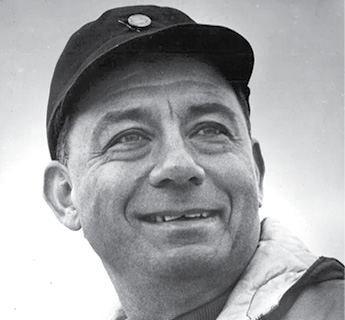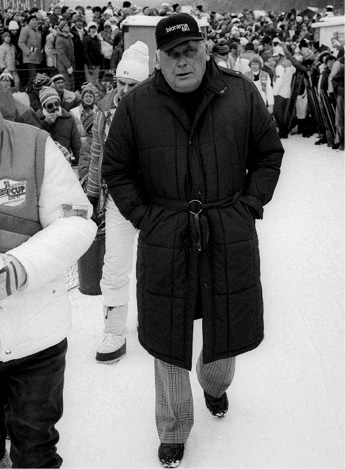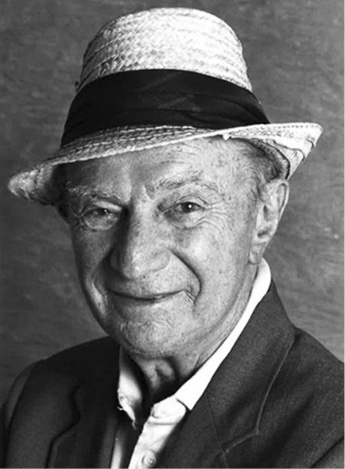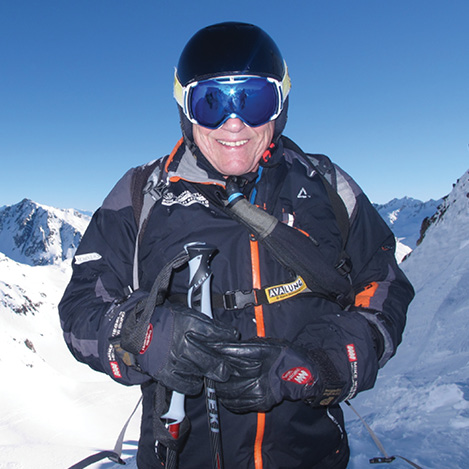
Long before the internet, influential newspaper columnists gave us up-to-date dispatches on where to ski, where to stay, and where the snow was best.
By Jeff Blumenfeld
Long before the internet took over our lives like a giant electronic Godzilla, when skiers wanted to know where to go, where to stay, what to bind to their feet, and what to wear in all kinds of weather, they turned to ski magazines. But it was newspapers that carried the most up-to-date information. Legendary scribes like ski columnist Frank Elkins (1910–1973), one of the country’s most influential mid-century ski writers, worked for 28 years at the The New York Times and 18 years at the Long Island Press, and was elected posthumously to the U.S. Ski Hall of Fame in 1974.

But Elkins wasn’t the only journalist whose columns influenced generations of skiers. From Europe to Canada and across the United States, during the 1950s to 1980s heyday of print journalism, a skiing press corps churned out copy. Usually every Thursday or Friday, these outsized personalities—old-school journalists, every one of them—would profile ski area executives, write about their visits the previous week, offer tips about money-saving lift and lodging packages, and stories about beginners, seniors, children, gear, racers and ski patrollers. Snow conditions were rated: poor, fair, good, very good or excellent, although a Friday night freeze could turn it all to boilerplate.
Their names are now legendary and include, in addition to Elkins, 1928 Canadian Olympic women’s track-and-field star Myrtle Cook (1902–1985) of the Montreal Star, one of Canada’s greatest advocates of women’s sport; Sir David English (1931–1998), editor of Britain’s Daily Mail and noted ski writer; Robert William Lochner (1930–2015), sportswriter/editor for the San Francisco Chronicle, Los Angeles Times and Oregonian newspapers; John Samuel (1928–2014), sports editor of the UK Guardian; Carson White (1914–2001) of the Sacramento Bee and San Francisco Examiner, among other outlets; and Archer Winsten (1905–1997), a leading American film critic and ski writer for the New York Post.
Reading their columns, one imagines them pounding on classic Remingtons or Olivettis, then later TRS-80 desktop microcomputers (affectionately nicknamed “Trash-80s”), sipping bourbon as unfiltered Camels burned down to their fingertips.
Today fewer newspapers cover skiing, due to competition from online sources and loss of advertising dollars. Snow condition reports and race coverage has been drastically reduced. Newspapers have less space to cover hard news, let alone to write about winter enthusiasts who slide down mountains. This is despite the fact that for most newspapers, skiers are an ideal demographic that tends to be upscale, affluent, active, suburban, and thus, attractive to advertisers. So it’s not surprising that ski writers who still file a column every week during ski season reminisce fondly about four ski journalists in particular.
Kings of the Press Rooms
No one could dominate a press room like French journalist Jean-Jacques “Serge” Lang (1920–1999). An imposing 6-foot, 7-inch mountain of French Alsatian stock, Lang was a sports journalist for Blick, La Suisse, 24 Heures, and L’Équipe, and founded the Association of International Ski Journalists in 1971.

“Here was this giant man with his hands on a small typewriter. He was so huge and his hands were so big, you wonder how he could type,” remembers John Fry, author of The Story of Modern Skiing (University Press of New England, 2010). “Much of Lang’s avoirdupois appeared to be concentrated in a beach-ball abdomen, teetering on surprisingly sturdy legs. His skull was square and massive, framing a florid peasant’s face that could have come from a Bruegel painting. His eyes tightened into slits when he was angry, and his smile was gap-toothed and friendly,” Fry said.
Lang also co-founded the World Cup, the racing circuit that made stars out of Jean-Claude Killy, Ingemar Stenmark and Franz Klammer. He modeled the concept on the soccer competition of the same name. With U.S. Ski Team coach and broadcaster Bob Beattie and French coach Honoré Bonnet, Lang hashed out the details in January 1966 near Hinterseer Farm, halfway up Kitzbühel’s Hahnenkamm downhill course.
Another larger-than-life character was Michael Strauss (1912–2008), The New York Times sports journalist for 54 years and its ski writer for 25 winters. He had a seemingly inexhaustible reserve of personal anecdotes about everyone from Babe Ruth to Pete Rose, Sonny Liston to Joe Namath, Calvin Coolidge to Richard Nixon. Strauss covered everything from archery to yachting, but he especially loved skiing. As the Times ski specialist from 1954 through 1979, it’s said he wrote more ski stories than any other writer for a major American newspaper, about 1,600 of them.

“Straussy” was a Panama hat-wearing sportswriter who would enter a press room shouting, “Somebody give me a lead for my story,” remembers Phil Johnson, a ski columnist for the Schenectady, New York Daily Gazette.
Sports reporting was in his blood. Stories in the Times covered every facet of skiing, including alpine and nordic competitions all over America, NCAA tournaments, and recreational ski happenings, according to Carol Hoffman, president of the Lake Placid Ski Club. He was elected into the organization in 2001. Strauss covered the Winter Olympics at Calgary, Squaw Valley, Grenoble, Innsbruck and Lake Placid.
Olympic silver medalist and world champion Billy Kidd, now 76, met Strauss when he was a teenager. “He used to come to Stowe to cover the International Races, created by American International Group (AIG) founder C.V. Starr, and write about the skiing Kennedy clan and the Aga Khan, a competitive downhill skier who skied for Iran in the 1964 Olympic Games…If he mentioned you, that meant you were playing in the big leagues.”
After retiring from the Times in 1982, Strauss became the Florida Palm Beach Daily News sports editor for 25 years. Asked through the years why he never was a fine skier himself, Strauss had a ready answer: “I never found time to do much skiing. By the time I finished my interviews, wrote my stories and went into town to send them by Western Union to make my paper’s deadlines, the lifts had stopped running.”
No Better Advocates
There were no better advocates for the sport of skiing than enthusiastic ski writers, many of whom can be credited with the early growth of the sport.
One such super journalist/fan is Arnie Wilson, a veteran British ski writer who started in the 1970s, and for 15 years was the London Financial Times ski correspondent. He then wrote for Ski+board, the Ski Club of Great Britain magazine, which he edited for 13 years, and for a few years had a regular ski column in Australia’s The SkiMag.

In 1994, he and the late Lucy Dicker skied every day for a year in The Financial Times Round The World Ski Expedition—a feat which took them to 240 resorts in 13 countries, and into the pages of the Guinness Book of Records. In all, Wilson has skied 737 resorts worldwide, including ski areas in all 38 U.S. skiing states, and 40 heli-ski operations in 14 countries.
From his home south of London, he tells Skiing History, “When I started writing about skiing there were very few full-time ski writers except the tiny staffs working on dedicated ski magazines. Most of the writers who gradually became regular ski writers were all doing other jobs on national newspapers at the time.
“I suppose you could say we were all cheerleaders for the sport. I’d like to think that our enthusiastic stories about skiing were contagious and hopefully led to more people taking beginner lessons,” Wilson said.
The power of the printed word should never be underestimated, and certainly not when it came to Charlie Meyers (1937–2009) of the Denver Post. Meyers, who also wrote for magazines, covered six Winter Olympics, opening doors to the nascent sport of American ski racing.

In February 1987, tragedy struck the sport when an avalanche killed four skiers on Peak 7, a then-unpatrolled backcountry stash in Breckenridge. In search of epic powder, skiers disregarded the skull and crossbones on bluntly worded warning signs, and were swept away. More than 250 volunteers and skilled mountaineers were involved in the recovery efforts, working shoulder-to-shoulder with probes and ground radar. Lawsuits ensued. Even the mountain’s own ski patrol thought the company was negligent, according to David Peri, Breckenridge director of marketing at that time.
In the aftermath of the deadly slide, Meyers attended town meetings and witnessed volcanic anger among parents, ski patrollers and resort management. Peri says Meyers worked to defuse the situation with even-balanced Denver Post coverage of both sides of the issue.
“Charlie advocated for backcountry skiing and wondered whether it’s better to give people freedom, or try to create a nanny state that attempts to protect them from themselves,” says Peri, who now lives in Santa Cruz, California. “His words soaked in like a rainstorm. People were still hurt but Charlie had brought all of us together, particularly first responders on the front line.”
Rise of the Internet
Ski columnists are no longer the primary source of snowsports information. During the winter season, nonstop coverage is everywhere: Instagram, Twitter, Facebook, Snapchat, blogs, vlogs and podcasts. The news may be instantaneous, but it lacks the depth evident in the work of those ink-stained wretches who were the greatest advocates for the sport.
Tom Kelly, U.S. Ski and Snowboard Hall of Fame honoree and former VP-Communications at U.S. Ski and Snowboard, fondly remembers that the sport was lucky to have dedicated sports writers, especially considering its size compared to traditional ball sports. It was more than a job.
“If you participated in skiing and were a journalist, you wanted to write about it. Maybe they did it for their passion, the sense of adventure, the ability to travel or the free lift ticket—or all of the above,” Kelly says.
“We don’t have that same level of coverage now. They helped play a significant role in helping grow the sport. Skiing wouldn’t be what it is today if not for the grassroots efforts of journalists in those days.”
Adds Billy Kidd, “They brought new and creative ways of covering skiing. People followed along as their favorite athletes accumulated points. It built up season-long interest, and more importantly, readership.
“Sure, I can obtain ski race results online, but it doesn’t provide the kind of insights I gained from classically trained ski columnists who took a lot of information and boiled it down to concise analysis.”
Kidd continues, “The columnists who followed ski racing were the best at helping readers understand why an exceptional athlete like Jean-Claude Killy, for instance, had his best events under pressure when it counted the most. Try getting that on Instagram or Twitter.”
ISHA vice president Jeff Blumenfeld, a resident of Boulder, Colorado, is the president of the North American Snowsports Journalists Association (NASJA.org). He is author of Travel With Purpose: A Field Guide to Voluntourism (Rowman & Littlefield, 2019). Learn more at travelwithpurposebook.com.
From the January-February 2020 issue of Skiing History.
